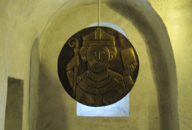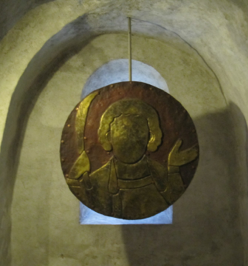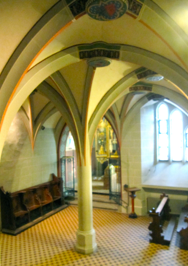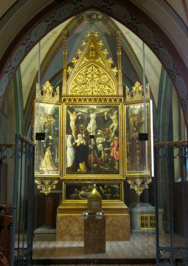The crypt
ST. MARY’S CATHEDRAL
konstanz, GERMANY
europe
JANUARY 26, 2011


The crypt
ST. MARY’S CATHEDRAL
konstanz, GERMANY
europe
JANUARY 26, 2011




Within the Münster Cathedral of Our Beloved Lady is a Romanesque crypt that contains the largest treasure store, unique in the Christian world, dating from around the year 1000. The crypt was constructed between the 9th and 10th centuries. It contains four original gold medallions that were originally installed on the external wall of the choir. These medallions, known as the “Majestas Domini” are installed in window niches below ground. This area of the cathedral has a distinctly Medieval feel in its architecture and construction. Nearby is another chapel, this displaying an opulent Gothic tri-part altarpiece. The groin vaults tile flooring, and carved wooden benches meld well with the work of art, making this and its adjoining crypt a place of deep reverence.
PHOTOS: Left Column: 1. Tile floors with the pattern of fleur-de-lys. 2. Entrance to the Crypt. One of the four gold medallions is visible from the doorway. 3. Detail: the central panel of the altarpiece. The figures are present at the crucifixion of Christ and represent the Virgin Mary, Mary Magdalen, and the patron dressed in resplendent armor. 4. One of the four golden medallions in the crypt. Center, Top: Installed in the crypt: Golden Medallion dating from 1000. Center, Bottom: Golden Medallion dating from 1000. Right Column: 1. View of the chapel from the stairway. The slender columns and painted detailing on the stone groin vaults makes this a very special place. 2. The Triptych, an altarpiece displayed in the chapel

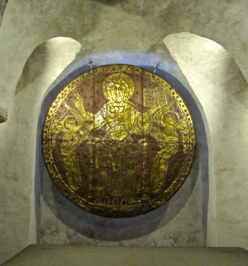
Romanesque, Gothic & Baroque
